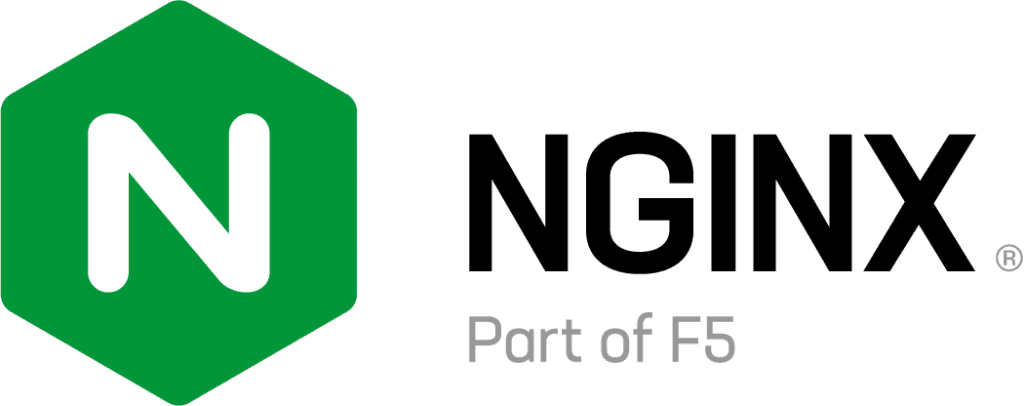Today, open source and commercial behavior are not binary opposition, and even co-prosperity and symbiosis. Commercial factors are deeply affecting open source. According to incomplete statistics, in 2021, the total investment and financing of open source native commercial companies in my country will exceed 5.2 billion yuan, a year-on-year increase of about 86%. The commercialization of open source is thriving. So, is open source business at the end of it? For large manufacturers, the benefits brought by open source are often indirect and difficult to measure; for more open source projects that are still on the sidelines, it may not be so easy to take the step of commercialization, and eventually they can stand out as a The darlings of capital are even rarer.
Open Source China News Fast Delivery invited enterprises that have embarked on the road of open source commercialization to talk about: What is the ultimate purpose of enterprises participating in open source? As open source is a powerful marketing tool, how can companies use it to reach customers and open up the market? At present, various typical business models such as SaaS model and open-core model have been formed around open source. How should enterprises choose? I hope to help more open source developers clear the fog and explore open source commercialization paths together.
Li Chen: Straight to the point, let’s talk about it first. Is the end of open source business?
Wang Yeliang (head brother):
I think the end of open source must be commercialization. Some well-known open source projects that have done well or have a high popularity rate have commercial companies behind them. At least within the scope of my vision, no open source project is only open source community, not commercial.
Is open source a profitable business tool?From a business perspectiveLook, it is indeed an effective means. People who respect Apache and the Apache culture are actually reluctant to hear this sentence, they will find it particularly harsh, and they are unwilling to accept it.
Wen Ming, the founder of Tributary Technology, once mentioned a “funnel” model, which is like this: when you understand an open source project and think the project is good, give it a like, you enter the first layer; After downloading it, it is the second layer; after downloading it, put it in the test environment for testing, and this is the third layer; after the test, if it feels good, put it on the production node, which is the fourth layer; next, based on it Develop some content and contribute to the open source community and become a committer; going to the next level, commercial demand arises, and commercial services begin to be sought, and because the open source version cannot support the demand,returnProducts that need to be commercialized. This model is a funnel structure from top to bottom, and the bottom is commercial flowering.
Let’s imagine that when we get to the bottom of the funnel, if we don’t do commercial conversion,“funnel“What underpins these transformational actions in the model? Support requires people and resources. Without the support of commercialized behavior, it is difficult to grow whether it is a community or a project; whether it is a product function or a brand, it is also difficult to continue to go down.
Finally, since the open source community has gathered a large number of outstanding developers, we will hold various sharing and exchange meetings for developers, which also requires commercial support. If you want open source projects to grow and be used by more enterprises, whether it is marketization or productization, it needs to be driven by the goal of commercialization.
Guo Wei (Guo Daxia):
Including incubated and retired projects, the Apache Software Foundation has a total of more than 2,000 projects, and there are about 200 top-level projects. The vitality of the top projects is relatively good and the duration is relatively long, but not every project has a commercial company behind it.
The open source community is a relatively self-consistent organization. It is very likely that the project itself is very popular and everyone is using it, but if a closed business loop cannot be formed, there is no business model. A typical example is Apache Log4j, which is used by everyone, but it has never been a commercial company. If a commercial closed-loop and commercial company are built around it, it is difficult for its income to support a particularly large volume.
open source projectofThe end point is not necessarily all business. An open source project with a few dedicated contributors, or a small community, can survive for a long time.I am maintaining the ClickHouse China community, but not based on the ClickHouse communityexistChinaDoBusinesschangebecause once you turn it into a business, all kinds of problems arise.
I think that open source is a good development model, which allows a good software to iterate on itself through community collaboration, and then constantly add new contributors to break through the boundaries of a company or a few people , keep pushing upwards. The end point of open source must be commercial, not necessarily.
Conversely, if a commercial company operates based on an open source software, is this model a good model? I think it’s a very good model.If there are commercial companies, there will be continuous power to join and develop,Do operations and realize business closed-loop. For companies, it can also continuously expand the open source community to the outside world.
Software itself is not actually code, but a cognitive boundary, a solidification of cognitive logic. Only by making software open source can you make a software without a ceiling. For a closed source software, the founder or professional manager of the software, or the management team, is the ceiling of the software company.
For the open source community, if there is a commercial organization that makes continuous contributions, the community can continue to prosper and last longer.
So I feel that the end of open source is not necessarily commercial. But commercial companies operating on open source software are a good business model. But not every open source project has business at the end. Many Apache Software Foundation projects do not have commercial companies and are doing well.
Confucius:
Vigorous and long-term open source projects,andIt is better to say that the commercialization is done well, but the standardization is done well. There are many forms of normalization, and the establishment of a commercial company is a more typical and common way. There are also some projects placed in organizations such as foundations, and the management is more standardized. In this way, when the project is used on a large scale, it can avoid some problems or risks such as licenses and security loopholes, and can continue to develop and be adopted by more people.
Commercialization is not the only option for open source projects. At a deeper level, standardization is the big trend.Now many projects are only three to five years old, and there is no end to it. Can you survive tomorrow?Alldo not know.
NGINX was born in 2001, and it has been 20 years now. The whole development process has gone through twists and turns, and it is a good research object.After making NGINX open source in 2004, founder Igor established a commercial company in 2011, with a very long interval in between.
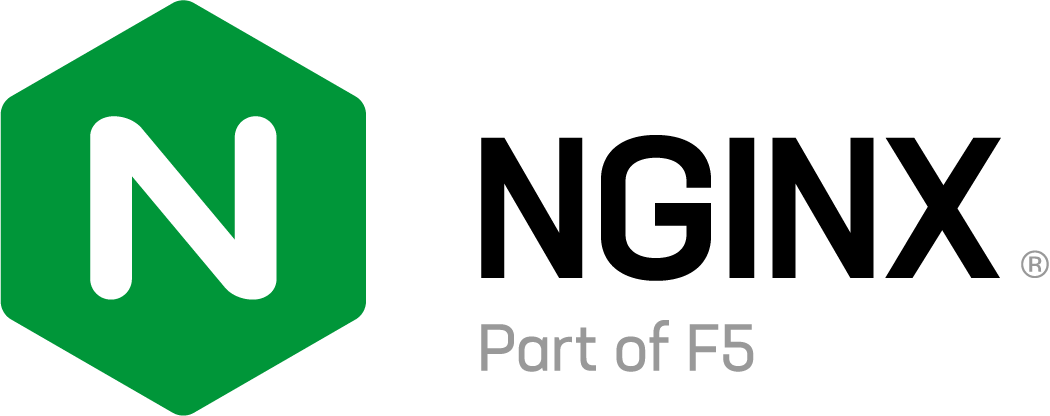
why? Because when Igor first developed NGINX, he did not pursue commercialization very impetuously, and did not leave some important functions to the commercial space. Instead, in order to solve the problem of C10K from the beginning, he tried to make it as lightweight as possible to improve performance. Do it well, optimize the kernel.
During this period, he basically did not pay much attention to running the community, but has been paying attention to the product itself, without commercialization at all. But by 2011, there were already a lot of big companies using NGINX. They want the software to have some enterprise-level features to help them scale, and they also hope that commercial companies can provide enterprise-level support services. Igor was in a state of community pressure at the time, so in 2011, he established commercial companies in Russia and the United States at the same time.
In 2019, NGINX was acquired by F5. This year was the climax of NGINX’s pursuit of commercialization. As a listed company, F5’s pursuit of profit is understandable. Until 2021, NGINX is working very hard to realize commercialization. At this time, the entire product and team are pursuing the results of commercialization, because there must be results to prove that the commercialization is successful.
But there was another turn. Recently, we’ve launched a lot of things to go back to our roots – open source culture. From the climax of pursuing business, NGINX has fallen back to practicing open source, such as investing in more open source projects, making some of the more important features in the commercial version open source, and launching the NGINX Enterprise Edition in China to provide open source users with business knowledge Serve.
“Don’t forget your original intention, you will always be forever”, this sentence is a bit ideal, but it is true. Whether it is open source or commercial, it is a fluctuating process, and in the end we have to find a balance. Especially as a business model derived from an open source product, the gene of open source cannot be lost.
Zhao Wenbin (Max):
Let me talk about three. First, the relationship between open source and business is more of a symbiotic relationship, and no one is the end of the other. They are two categories of problems. On the one hand, open source is self-contained and has its own development logic. Both geeks and technical fans will spontaneously develop open source and realize the beautiful vision of open source. On the other hand, we are now in a business society, and business penetrates all aspects of social development.Whether open source or closed source, eitherlinkThere will be commercial factors involved. Therefore, I think that they are not related to each other as cause and effect or end point, but within the two categories, they have their own development logic.
The second point is that there is an important role between open source and business. Business is a catalyst for open source; open source provides business with a new track or an opportunity for a new business development model. This judgment can be verified both from the 29 years of development experience of Red Hat itself and from the development of other open source companies.
Today, open source technology has entered thousands of households. It can be said that mainstream IT technologies, such as cloud-side collaboration and IoT, are based on open source.Open source becomes IT developmentofsupport point. In this process, business has acted as a catalyst, enabling open source to grow and develop. Without commercial promotion, many technologies cannot become mainstream technology applications in a short period of time.
Red Hat has always been involved in open source. Over the decades, Red Hat has undergone significant changes, and the role of open source is clear.
Business requires new changes and a new track, which is just with the help of open source, subverting the original decades of IT development trajectory. It used to be that big manufacturers have been leading the way through closed-source software for decades, but now, business has reshuffled with the help of open-source software, or has created a new position, from which more benefits can be obtained.
Third, from a long-term perspective, open source and business will develop together, not who will steal the limelight. In the future, business will not disappear, and the original intention of open source will always be there. Both business and open source will take a better development path.
Topic 2: Why do companies join open source?
Li Chen: Everyone talked about their own opinions from their own perspectives. It’s the same sentence. The end point of open source isn’t just business, but we’re all working toward it, hoping to prove commercially a successful project. Moving on to the second topic: Dev Ittycheria, CEO of MongoDB, has made it clear that open source is all about gaining a market. Then please share with the guests, what is the purpose of your company’s commitment to open source?
Zhao Wenbin (Max):
The information we give to customers will mention that Red Hat has been open source for the longest time. Open source is not our end, but a means.Red Hat also has a position——The core purpose of a business service company is to serve corporate customers.We will use the means of open source, including the open source development model to build ourofproduct. Red Hat will also use many open source collaboration models and organizational models to build its own organizational system. In fact, Red Hat has always been very clear about the purpose of open source, and has never been silent about it.

Red Hat has a saying that we’re going to be a transparent business. The community is very transparent, including the contributions made. Therefore, we must give priority to the upstream. Only by increasing the contribution in the upstream can we build influence and open up all links, so that people can think that you can provide value and let everyone recognize you.
There is no problem with our pursuit of commercial value, and the original intention is very clear, but we must be transparent in our approach, so that developers can think that you have contributed and can create value, not just asking for it.
Guo Wei (Guo Daxia):
For enterprises, the ultimate value of open source is not just customer acquisition,more importantlyBuild a community and attract more developers to build together. If an open source community can gradually iterate the software to the best, then open source is a good means. butIf you just use open source as a means of acquiring customers,This istoo narrow. You don’t need open source, you can get customers for free, you can install it, you don’t need to adjust bugs, and you don’t need to contribute code. Isn’t it simpler, why do you have to use open source?
So I think the core of open source is that everyone can share their own ideas, designs, and ideas, and then build a top-level thing in one place. As for this top-level thing, how to commercialize it in the end, I think that is what commercial companies have to do.
If a commercial company only uses open source to acquire customers, it is difficult to become a top commercial open source company.
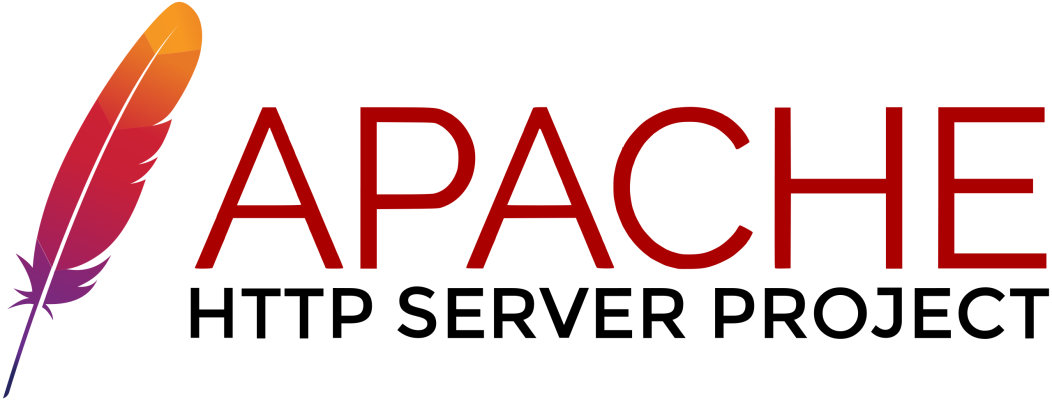
When Red Hat and the Apache Software Foundation run their communities, they pay more attention to the contributions of contributors and committers.quantity,will goFind the bright spots in the community, and then mobilize everyone to iterate the software together. I think this is what a community and even a commercial company should do. Now whether in Silicon Valley or China, everyone is talking about PLG (Product-led Growth, product-driven growth)it is the product power that determines the growth of the entire community and the entire company.
If you only use open source as a means of acquiring customers, then your idea is still a means of SLG (Sales-led Growth, sales-driven growth), then it must be difficult to promote the market quickly.
For companies, whether it is a completely open source model, an open-core model, or a model that provides professional services, the core is still open source products. For commercial companies, my suggestion is to remove customer acquisition from your mind when doing open source, pay attention to committers and contributors, and you will find more customer leads and orders.
It is very easy to achieve the customer acquisition index, advertise, do Google, Baidu keywords, and use the free Internet model to run quickly. But this is the thinking of the software 1.0 era, and open source is a 2.0 and 3.0 era, and the gameplay must be different from the original gameplay.
Open source is the more you give, the more you get.you don’t give lightprostitution, the commercial company will certainly not be able to operate. Some head contributors and community organizers like Red Hat have to put in a lot of energy to build a community. If companies don’t look for committers and contributors, who do you expect to find them for you?
Confucius:
Because I have to pay attention to the community and the market at the same time, to be honest, sometimes I feel a little schizophrenic. Because the indicators on the two sides are completely different and are in a state of competition with each other to some extent, this balance point is difficult to grasp.
But if you really want to use the form of open source to attract more quality users, we need to be more restrained and more pure in mind. When doing things, don’t always think about selling dog meat with sheep’s head, and don’t always think about selling.
As a manufacturer, if you can generously share your experience-based knowledge (such as what the learning path is like, where a complex system should start, etc.), real high-quality users will come together. Let go of the very utilitarian mentality in order to truly exert your influence.
Zhao Wenbin (Max):
Red Hat realizes business value through enterprise services.before,Open source technology is used by geeks, with a small audience and a small amount of use. When we want to introduce open source to traditional enterprises, it is difficult. Because for enterprise users, the threshold for using open source is too high. This is like building a car and repairing it, which is impossible. The value of open source commercial companies is here. On the one hand, they contribute to the upstream and contribute code to make the technology more powerful. On the other hand, they clarify the needs of enterprise users and provide customers with enterprise-level services. Commercial companies are here to help fill in the holes in open source software and create a better enterprise-level service system that is even like traditional closed-source technology.
On the upstream side, ensure the influence and technical iteration of the product side; on the server side, provide a productized and standardized enterprise-level service system, allowing users to use the softwareTimeIt is more worry-free and labor-saving, and it can be quickly iterated. Who can do well in this chain,whoCommercialization will succeed.
If you only do one, lose the upstream, you will not be able to lead the future development direction of the software, and you will easily fall behind; if you ignore commercial services and cannot realize it, you will not be able to survive. So I think both are important. Red Hat has built its own system this way.
Wang Yeliang (head brother):
Guo Daxia also mentioned that many business opportunities are obtained through open source. After becoming a contributor to a committer, this can prove that you have warmth and affection for the open source community, and that you agree with this project and the value this project brings to you personally and to the system.

When we were doing commercial conversion, we found that many developers gathered around us were not high enough, most of them were operation and maintenance engineers and development engineers.At this time, it is necessary to sell the open source company, find the operation and maintenance director and CTO of the other party, work hard and burn the fire, it may be effective. Because an ordinary engineer doesn’t have much say in the company.
The power of the community alone is not enough to convert a business or get a potential customer to make a critical decision. Different companies are at different stages, face pain points, and prepare different budgets. They should adopt a two-pronged approach and flexibly combine them according to the needs of the company, rather than unilaterally choosing a certain method.
Topic 3: After companies participate in open source, is there any advantage in talent recruitment?
Li Chen: The open source community has gathered a large number of outstanding developers. For open source companies, is there a natural advantage of being close to the water in terms of talent recruitment? How do you all do this? Besides talent, what else can companies gain from open source?
Wang Yeliang (head brother):
Many people also know that our first employees are PMCs of APISIX or developers of NGINX community and OpenResty community. Because APISIX is a set of gateway projects built on NGINX and OpenResty. Therefore, this has led to a long-term distributed remote office model, with employees distributed in various companies. This caused endless pain for our entire commercialization.
For open source companies, open source does have an advantage in terms of talent acquisition, but it has also been resisted by these companies because you are poaching.
We have an engineer who is from our paying enterprise user and is serving this company now. At that time, when we talked about cooperation and signed a contract, he sat opposite me. In fact, it was already agreed to come to us at that time. What do you think the person in charge of the technical center of the other party will think?
Many open source users I have met, including commercial users, hope to do some technical output through the open source community, get some labels through contributions, or hope to use the power of the open source community to spread something. For companies, open source can enhance the influence of the team; for individuals, it can increase the personal halo, which is conducive to future job-hopping.
Guo Wei(Guo Daxia):
For companies, a great open source community means pushing the boundaries of cognition.
In the early days of Dolphin Scheduler, someone in the community had an idea to build a new task type – dependent, which could break dependencies between DAG graphs across different workflows. From an internal enterprise standpoint, from a commercial point of view, it will never be realized because it does not meet the design specifications. But this is an open source community, there are people who need it, and some people are willing to contribute, PMCtotalCan’t stop it.After the dependent component is completed, many users areveryLike, there are many users who migrated from Airflow because of this component.
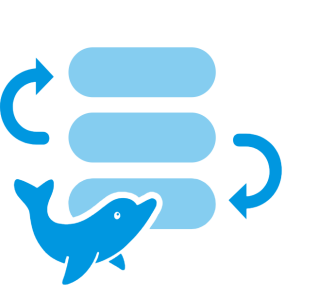
Everyone thinks that Dolphin Scheduler is for batch task scheduling, but recently, the community has started to do the scheduling of data stream real-time tasks and the DAG association of real-time tasks. These things are very “brain-opening”. Mass innovation in the open source community will keep you coming up with new ideas and new attempts. If a company develops software, it is difficult to have these innovations. Once a bottleneck is encountered, the company is finished.
Zhao Wenbin (Max):
Do open source companies have an advantage in recruiting talent? I think it’s somewhere in between. Because the open source community is very transparent, what companies are doing is easy to see. This has long-term implications for the business, and challenges both HR’s work and the formulation of talent strategies. If an enterprise does not establish a good reputation and image in the process of commercialization, and does not abide by the values of open source, it is unfavorable for enterprises that want to recruit and retain talents. Therefore, enterprises must maintain their reputation in the open source community.
Confucius:
The impact of open source culture on corporate culture is quite obvious. In our company, the management is very flat, everything will be communicated in a timely and open manner, and goals will be accomplished spontaneously.
Open source culture can inspire goodwill between people. For example, when my questions are always answered by others, I will be willing to take the time to answer other people’s questions, even if it may not have much to do with me. This kind of goodwill and trust may eventually turn into creativity at work and happiness at work. This is not to say that this corporate culture is necessarily better than others, but it does require everyone to be more enthusiastic.
True enthusiasm will constantly push yourself forward, to align with everyone’s direction, and to make contributions.
Topic 4: How to make money through open source?
Li Chen: At present, various typical business models such as SaaS and open-core have been formed around open source. How do you make money through open source? Why choose the current business model?
Wang Yeliang (head brother):
The APISIX project is donated by a company, not an individual. Before starting the project, the company was ready for commercialization. This is very different from the starting point of open source for personal projects.
From a purely technical point of view, OpenResty can already achieve many functions, why does APISIX appear?because the community“How should the OpenResty project go in the future?” of thisQuestion, have different ideas. The two founders of APISIX believe that the future API gateway will be a good business track. So they will do this project.
Tributary Technology has two channels to make money, one is to make open source SLA (service-level agreement, service level agreement), and the other is to make commercial products. Many Apache Software Foundation projects do this. Why choose these two business models?
On the one hand, becauseGateways are different from big data and databases. Big data and databases belong to the big ecology, and the ecology itself is very prosperous. However, the gateway must be driven by the prosperity of the surrounding ecology. For example, protocols, observability, and security must be associated with other controls in order to establish a good ecology.
Companies in different ecosystems will choose different components, and in this process, architecture and operation and maintenance requirements will definitely be generated, so weforOpen source users offer SLAs.
On the other hand, many traditional financial enterprises, traditional manufacturingindustryThe person in charge of procurement of the enterprise does not know what open source is, and the understanding of the gateway is still in the concept of hardware, and often asks “how to sell a set” and “which series is equivalent to F5”of” and other issues. So we should use commercial closed-source software to contact them, and talk to him with the enterprise version.
At present, these two business models are not decided by a few people, but the market, the track and personal feelings.and many other factorsdecided.
Zhao Wenbin (Max):
Red Hat pioneered the subscription model. This subscription model is a combination, providing customers with standardized enterprise distribution products on the one hand, and enterprise-level services comparable to traditional closed-source software on the other hand.
This model even changed the sales method of traditional closed-source software in that year.——In the past, software was effectively an asset purchased by a business.Subscription model is billed annually, reducingspanThe customer’s usage threshold and initial usage fee make the whole process more transparent and easier to use, which greatly promotesspanTraditional enterprises adopt open source technologies.
To this day, this pattern continues at Red Hat. Of course, in the new situation, there will be many changes.
For example, with the development of public cloud, we will also cooperate with public cloud partners, and there will be some changes in the billing model, but the basic core remains the same. The business model has a certain scope of application. In the face of different historical stages and different market environments, localized adaptation is still required.
Li Chen:
Our Zilliz vector database Milvus It is also a fully open source model. These few years,Milvus From 1.0 to 2.0, from stand-alone version to cloud-native, multi-copy, it is evolving step by step. Zilliz wholeheartedly contributes a lot of high-quality code and content to the community, and the community continues to grow.
There are also many people Milvus After this product is packaged, it is used for financing and selling. We believe that as long as the industry is prosperous enough in the early stage, it is actually very good. After all, everyone hopes that the entire ecology can develop so that they can have food. In the field of vector databases, there are still many business models worth exploring.
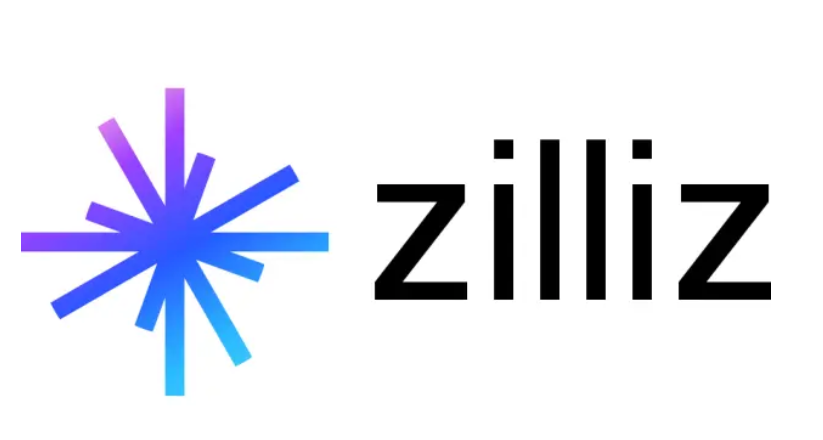
Confucius:
If you look at the business model, NGINX is all-encompassing, it really has everything,Trying various business directions diligently.
For a relatively long period of time, NGINX has been in the open-core mode. We have commercial closed-source software NGINX Plus, NGINX App Protect, etc., which are to enhance visibility and security from the data plane and management plane.
Also, the number of instances many people use NGINX may be in the thousands,possibleHe himself doesn’t know how many, because these instances may come in with other software. As a result, it is difficult to replace the instance of the open source version with the commercial version, after all, there are technical barriers.
In addition, the use of open source software is increasingly advocated in China, and large banks and Internet companies are investing more and more in open source. Based on this external environment, we also learn Red Hat and provide enterprise-level support services for open source software, such as technical services, custom development, and more.Previously, our focus was open-core but in the past two years, it has slowly shifted to technical services.
In addition, we are also doing official certification exams and providing supporting training, because our product users are large enough, and there are certain thresholds for product use, and the exam also has a certain amount of gold. Those who pass the exam will have an advantage when applying for a job. This may also be a business model.
We also have a SaaS model, and recently we are working with Microsoft on NGINX for Azure, but unfortunately, it is not yet available in mainland China. Welcome overseas business inquiries.
Topic 5: What is the difference between the decision-making process at home and abroad whether open source software is used or not?
#Live #ReviewThe #open #source #business #Personal #space #News Fast Delivery #editorial #department #News Fast Delivery
